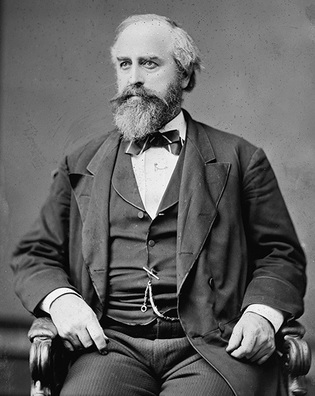 loading
loading
Old YaleHis fair cityYale alum Carter Harrison lived and died with the 1893 Chicago World’s Fair. Judith Ann Schiff is chief research archivist at the Yale University Library.  Library of CongressCarter Harrison Sr. ’45, elected to five terms as Chicago’s mayor, was known as a “common man’s mayor” whose “door was always open.” He was killed by an assassin in 1893. View full imageJust over 125 years ago, on October 30, 1893, the World’s Columbian Exposition was scheduled to end with closing ceremonies after a six-month run in Chicago. Created to celebrate the 400th anniversary of Columbus’s arrival in the New World, the fair was a showcase of American promise and achievement. And presiding over it was the city’s popular mayor, Yale alumnus Carter Harrison Sr. ’45. But the fair ended early when the mayor was assassinated on October 28. Harrison, who was related to US presidents William Henry Harrison and Benjamin Harrison, was descended from early Virginia planters. According to the memoir of Carter Harrison Jr. ’83LLB, who would match his father’s record of five terms as mayor of Chicago, Harrison Sr.’s years in New Haven changed him. “Four years at Yale in a New England anti-slavery environment had confirmed his latent dislike for slavery,” Harrison Jr. wrote. After two years of study and travel abroad, Harrison Sr. sold the 600-acre family plantation in Kentucky. Although he once wrote a relative that “to sell a man is to me one of the most disagreeable things I could possibly do,” Harrison also sold the enslaved people living there. In 1855, after completing his law studies at Transylvania University and a honeymoon trip to Chicago, he and his bride “knew where they wanted to live,” in his son’s words. “They had fallen in love with the lusty lake city.” Harrison mainly devoted himself to Chicago real estate, but from 1874 to 1878 he served in Congress as a Democrat. During that period, in 1876, his wife died; they’d had ten children, though six died early. He was elected mayor in 1879 and served until 1887—the year his second wife died. During the year of the fair, Harrison was elected mayor for a fifth term. Harrison was known as a “common man’s mayor” whose “door was always open.” He loved riding his white horse through Chicago neighborhoods, waving and stopping to shake hands. He was very proud of the fair, especially of its gleaming “White City,” which introduced neoclassical Beaux Arts architecture to America. (The façades were painted white, and daylight was reproduced at night by brilliant electric illumination.) The fair also celebrated pioneering efforts to develop the telephone, photography, motion pictures, and the automobile.
On October 28, a young man called at Harrison’s home. The maid showed him in, and the mayor, just up from an after-dinner nap, greeted his visitor in the hall. The stranger pulled out a gun and fired three times, mortally wounding Harrison. The assassin, Patrick Eugene Prendergast, turned himself in at a nearby police station. In The Devil in the White City (2003), Erik Larson writes that Prendergast said he killed Harrison “because he betrayed my confidence. I supported him through his campaign and he promised to appoint me corporation counsel. He didn’t live up to his word.” Prosecutors maintained that Prendergast was delusional but not insane. The jury agreed, and the verdict was “guilty.” A last appeal by Clarence Darrow for an inquest to commute the death sentence on grounds of insanity failed. Prendergast was hanged on July 13, 1894. On October 29, the celebratory close of the Exposition was canceled for a public memorial service. Harrison’s funeral procession filled the city for an entire day. On the day of his death, Harrison had delivered his last public remarks—at the fair’s “American Cities Day,” said to be the largest-ever gathering of American mayors. This final speech showed his pride in his adopted city: “When the fire swept over our city and laid it in ashes in 24 hours, then the world said: ‘Chicago and its boasting is now gone forever.’ But Chicago said: ‘We will rebuild the city better than ever’ and Chicago has done it. . . . What is it now? The second city in America!”
The comment period has expired.
|
|